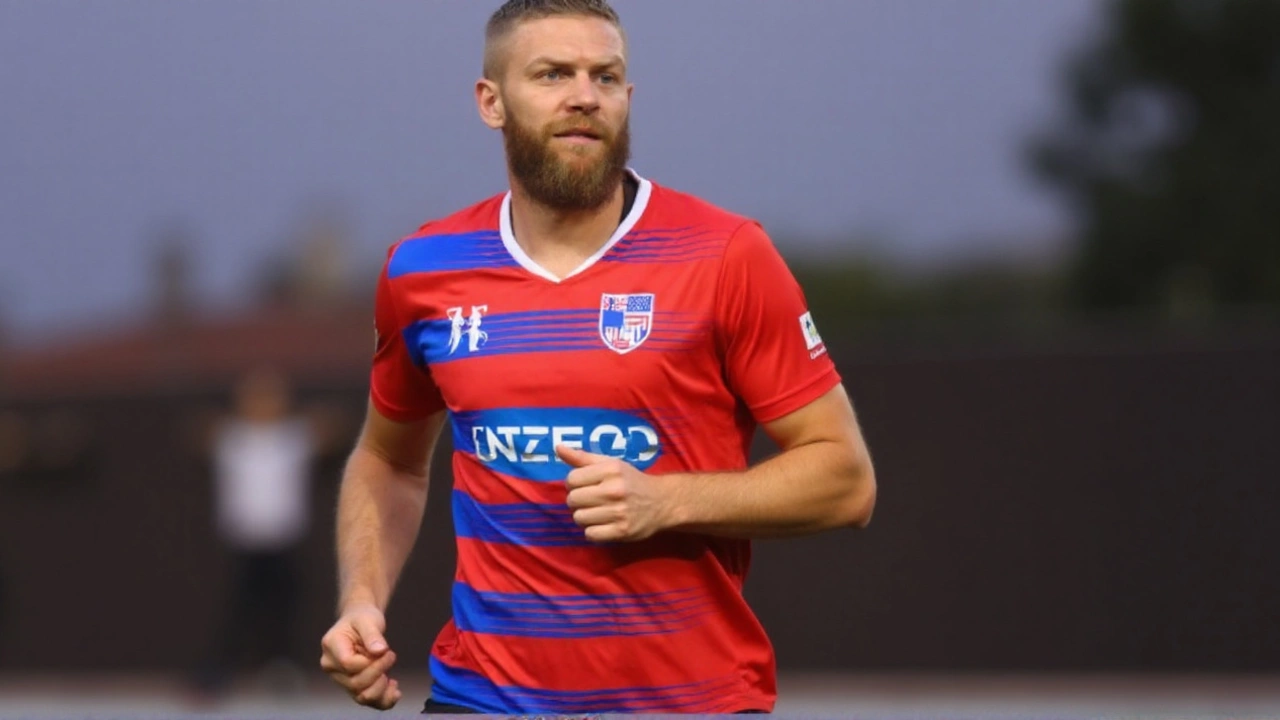A debut cut short
Andy Carroll took his first steps in Dagenham & Redbridge colors and didn’t make it to the final whistle. The former England striker was sent off on his full debut on September 13, 2025, a jarring start to an ambitious chapter that had seen him arrive in July on a three-year deal and take a minority stake in the club following a Qatari-backed takeover.
The red card overshadowed what was supposed to be a statement afternoon: a marquee name leading the line for a National League South side eager to accelerate its climb. Instead, Dagenham finished a man down and the mood turned from curiosity to concern. The club hadn’t issued a detailed account of the incident by the time of writing, and the referee’s report will determine the length of any ban. Under FA rules, suspensions vary by offence category—one match for a second yellow, typically more for serious foul play or violent conduct.
Carroll arrives with heavyweight credentials: more than 50 Premier League goals, nine England caps, and a reputation as one of the division’s most dominant aerial forwards in his peak years with Newcastle and West Ham. That pedigree is why this move drew so much attention when it was sealed in mid-summer. It wasn’t just another veteran winding down; it was a recognizable name attaching himself to a project on and off the pitch.
The off-field twist is part of the story. After private investors from Qatar bought into Dagenham & Redbridge, Carroll was announced not only as a signing but as a minority shareholder—rare at this level. The idea, according to people around deals like this, is alignment: the player has skin in the game, the club gets profile and experience in the dressing room, and the ownership bets that visibility plus know-how can speed up progress.
On the pitch, the equation is simpler. Dagenham need goals, hold-up play, and someone to bully defenses on set pieces. Carroll can still do those things when fit and supplied. Lower-league backlines are physical, the pitches can be unforgiving, and the football is direct. That should suit him, as long as his minutes are managed and the service is decent. The red card doesn’t change the plan, but it delays it and takes away rhythm just when both player and team needed it.
The dismissal also opens an awkward gap in selection. If the ban is one game, you patch it with a rotation piece and move on. If it’s three, you’re reworking the attack for most of a month. That affects training patterns, set-piece roles, and who leads the press from the front. The coaching staff now have to juggle minutes for forwards who expected to play off Carroll’s strengths—runners beyond the last line, wide players who swing in early crosses, and a midfield that dares to go long when it’s on.
There’s a subplot humming in the background: talk of a “Trialist B” who impressed in recent run-outs and, in some corners of social media, was said to have outshone bigger names. While trialist tags usually belong to pre-season friendlies rather than league fixtures, the chatter reflects a simple point—places are up for grabs, reputations don’t guarantee minutes, and Dagenham’s rebuild is bigger than one headline signing. Expect the staff to lean into competition now that the forward line needs cover.
What happens next will come down to how the club manages the moment. Communication matters after a high-profile red card. A clear message from the manager about standards and accountability, and a calm outline of the next steps—appeal or accept, rehab or reload—can keep the dressing room settled. As of publication, there was no formal explanation from the club beyond confirmation of the dismissal, which is typical while officials file their reports.
Carroll’s journey to this point helps explain the stakes. His career has been marked by bursts of dominance and long spells battling injuries—ankle problems, hamstrings, the lot. When available, he remains a handful, especially against teams that struggle with crosses and second balls. The key is availability. That’s why some deals at this level skew incentive-heavy, with appearance fees and performance triggers. Clubs protect their budgets; players back themselves to deliver. Neither side has confirmed the fine print here, but that’s the usual model.
Dagenham & Redbridge, for their part, have been hunting for stability and a route back up the pyramid. The club has spent years in and around the fifth and sixth tiers, with flashes of promise and frustrating resets. Fresh investment promises infrastructure—better sports science, a sharper recruitment process, and a cleaner pathway for academy prospects. Pair that with a seasoned striker who can mentor younger forwards, and the blueprint makes sense.
Plenty of lower-league projects have used star power to accelerate attention and revenue. Wrexham’s Hollywood era is the obvious reference, though every club’s story is different. The test is balancing the glare of a big name with the grind of weekly points. A red card on debut is the worst kind of misstep because it steals minutes you can’t get back. But it’s still just one incident. The season is long, and the plan isn’t built on one afternoon.
Tactically, when Carroll returns, expect Dagenham to double down on early crosses, long diagonals from the back, and set pieces loaded at the far post. You build around what he does best. That also means instructing midfielders to play forward quicker and full-backs to hit zones rather than feet. If he draws double teams, the second striker or the back-post winger has to profit. If he pins center-backs, midfield runners can claim rebounds and chaos.
The ownership angle will stay in focus. A player-shareholder raises governance questions at higher levels, but in non-league the rules are looser as long as the arrangement clears FA and league approval. The upside is day-to-day insight—someone who feels the training ground reality and can feed that into boardroom decisions about travel, facilities, and scheduling. If used well, that can shave small margins that matter in tight divisions.
Then there’s the community piece. Veteran names attract cameras and curious neutrals. If Dagenham harness that interest with ticket offers, school visits, and open training sessions, the bump can last beyond the first news cycle. Carroll is a visible figure; if he leans into coaching clinics and fan engagement while he sits out, he recoups a sliver of momentum.
The immediate timeline is straightforward. The disciplinary body will confirm the offence category and suspension length after receiving the referee’s paperwork. The technical staff plan for life without him for at least one game. The dressing room moves on quickly because it has to—units rehearse new combinations, and the video team highlights different patterns for the next opponent.
This debut was supposed to be a clean launchpad. Instead, Dagenham got turbulence. The larger project hasn’t changed, but the margin for early missteps just got thinner. The only fix is the old one: steady training weeks, a functional plan, and a forward who turns crosses into points once he’s back on the pitch.

Why this move matters
At this level, a seasoned target man can tilt matches that are often decided by set pieces and moments of pressure. Carroll’s name recognition brings spotlight, but his value has to come in penalty-box actions: screens, flick-ons, and finishes under contact. If he can deliver those, the signing pays off in results, not just headlines.
The investors want traction fast, and they’ve backed a hybrid approach—profile plus structure. That won’t work if the technical details lag behind. Recruitment has to cover for suspensions and injuries. Sports science has to manage load for older legs. Coaching has to lock in a route-one plan and a Plan B when teams sit deep. None of that depends on a single debut. It depends on what Dagenham do over the next ten league fixtures.
What supporters will watch now is simple: how many games Carroll misses, how the team scores without him, and how quickly he adapts when he returns. The first impression was rough. The second one, whenever it comes, will tell us whether this story is a bump in the road or the start of something meaningful at Victoria Road.
